My grandmother was a lady who as a child always seemed to me just a little bit fragile. She laughed but I don’t remember it being a real jolly belly laugh. She was slim and beautiful. I remember thinking she was very elegant.
I remember her taking me to buy a watch when I was aged ten. She was visiting with my grandfather from Sydney and she told me that she wanted me ‘to have something nice to remember her with’. I recall the watch was silver with a blue face. It’s not important. I remember her and I remember that day. Among other things she also had a significant role in saving my life as a newborn.
A day or so after I was born in Queanbeyan – I contracted golden staph from the hospital. This was not picked up by the hospital staff . But it was picked up by her. She had been a Nurse in Malaya and Singapore as I understood it. The story goes, that she marched up to the young nursing staff and told them what was wrong. They didn’t believe her and she insisted on them getting the Matron and a Doctor. Quite forcibly as I understand. Well, she was right. The Doctor sat up all night with myself and another new born boy and apparently it was pretty touch and go there for awhile. (Seems to be a bit of a thing with those of us with London blood). She bought me a pretty pink layette as a welcome gift and a white sateen cot set. The bigger gift I think is fairly obvious. I’m sure my mother who told me this story many times agreed. I didn’t know her as well as my other grandparents. The tyranny of distance and the fact that we were moving all around Australia and overseas. She died when I was thirteen.
However, I think now I know her well enough. Having searched out her story I found out that underneath that stoic face she’d had her fair share of losses. I think she was a strong woman and I think she learned early that she had to be.
Neva Irene Helmrich was born in Mt Morgan, Queensland on the 5th April 1918.
She was the third child of Priscilla London and Arthur (Dick) Helmrich. Her siblings were her older sister and brother, Audrey Florence Helmrich b 1912 and Edward (Ned) Burnett Helmrich b 1914. Two younger brothers, twins George and Sydney would be born but die in 1922.
Aged 1, Neva was living with her family in Darcy Street Mount Morgan. At this time her father had the house up for sale.
17th May 1919. Mount Morgan Auction Sales – Messrs Hempenstall Brothers will sell by Auction at the exchange of notes today on account of A. E. Helmrich his property at Darcy Street comprising a five roomed wooden cottage with front and side verandahs and allotment of land on account of the owner will offer a building site in the centre of the main street adjoining the National Hotel. very easy terms of payment.
In 1925 at the age of seven the family were still living in Mt Morgan. Neva’s father was employed as a Miner. Mt Morgan was a mining town pulling out copper, gold and silver.A huge and exciting change comes to the Helmrich family in 1929 when they move to Malim Nawar in far off Malaya. They shipped out on the SS Marella and for eleven year old Neva this must have seemed like the most wonderful adventure.
Fortunately for us Neva was quite the contributor to a children’s section of the Courier Newspaper in Rockhampon (The Corner). Because of this we have a photograph of Neva as a child in Malim Nawar in her garden. A photo of her parents aboard “Jumbo” and a photograph she took of a Pagoda in Penang whilst on a family holiday.
Neva also wrote into the papers about an exciting event that occurred in the ‘native huts’ nearby where a robbery occurred and that the Police had come. The native huts Neva was referring to were the homes nearby the colonial homes where the staff lived. I wonder how Neva’s mother, Priscilla went having a servant in the home. Something she had never known before and certainly not growing up. It must have seemed very strange. During the time that the family are living in Malaya, Arthur gave his occupation as Engineer. He was working for the Yukon Gold tin mine in Kampar. I can’t speak as to Arthur’s credentials other than he grew up in financially comfortable surroundings and I would daresay had quite an expensive education afforded him as a result. The rather brutal way his father suicided when he was a young man must have impacted on his view of the world.
It was in this locale that Neva met her future husband. The colonials as they were known all socialised together and the newspapers were full of reports of events such as dances, tennis events, cricket matches and all manner of fundraisers and school events that were well attended by the Australians and Europeans. Women met in the afternoon for tiffin (afternoon tea) and gossiping. The place was considered ‘colourful’ and ‘exciting’. I would hazard that they probably had little true understanding of the lives of the local people.
At this time in history Singapore was given the moniker Sin-galore due to the behaviour of those who passed through her ports. The Colonials did not always act as well as they should have toward the local people. These included Chinese Indians and the indigenous Malays.This was the time of Empire and the locals were often considered to be secondary citizens. Rising tin and rubber prices and a greater worldwide demand made the area ripe for the Europeans to make quick money and quite a lot of it.
Where Neva and her family were living was called British Malaya. This was at odds in the 1930’s with the rest of the world which was in the grips of financial depression. Malaya did not escape this but did not suffer the same hardships as was being seen back in Australia.
The Straits Times reports on the 2nd January 1934, Mr. Brian Miles who has recently arrived in Malaysia from Australia, is staying with his brother, Mr Stanley Miles, of Southern Kampar Tin Dredging
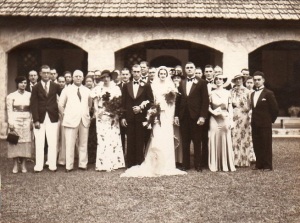 By the 1st April 1937 at the age of 18 Neva marries Brian Miles. Her surname is misspelt.
By the 1st April 1937 at the age of 18 Neva marries Brian Miles. Her surname is misspelt.
- Mr. B.D. Miles and Miss N.I. Helmeich
- (from our own correspondent) Ipoh, April 1.
- The wedding took place at the Presbyterian Church yesterday of Mr. Brian Daniel Miles. Son of Mr. and Mrs. Leslie Miles of Australia to Miss Neva Irene Helmeich, daughter of Mr. E.A Helmeich of Yukon Gold, Kampar who gave her away.
- The Rev. Hamilton Aikin took the service. Mr. H.G. Oates was the best man, and Mrs Stanley Miles the matron of honoour. The father of the bridegroom who was on his way to Siam, broke journey to attend his son’s wedding. Following the service at the Church, a reception was held at Chez Luthy, where the customary toasts were appropriately honoured. The reception was attended by Australian mining (friends in the district). The bridegroom is employed by Jelapang Tin.
- Appeared in the Singapore Free Press, Friday April 2nd 1937
- The same article appeared the following day in The Straits Times.

The couple settled in Ipoh in what was called the Penang Settlements, other familiar names were Perak.
Getting concrete details of Neva’s life in Malaya as an adult has been somewhat difficult. I know that her husband was a member of the Malaya Volunteers. Most men were at this time. My father recalls stories of Neva’s where she would go to Raffles Hotel for entertainment with other friends.
In 1938 Neva and Brian welcomed a son, Roy. The Sydney Morning Herald, 7th November, 1938.
Mrs E. L. MILES of St. Ann’s Court , Gordon, has received news of the birth of a son
This carefree life came to a very short and abrupt ending in the December of 1941. The expatriates and local people were caught completely by surprise with the rapid and aggressive advance of the Japanese army across the straits into Malay and Singapore.
Neva told my father and mother, how she and Roy had escaped Ipoh in Perak and had been on one of the last boats out of Singapore and managed to escape. Many did not. Women and children were among the many casualties of the war and the Japanese army were indiscriminate and brutal in their dealings.
Given that she lost her entire home and a life she had built along with many friends and family I guess you would have to understand her circumstances. I’m sure this also went towards forming her personality and coping skills for the remainder of her life. She was only twenty three.
Whilst I cannot get Neva’s voice; I can get the voices of other women who gave accounts of their lives trying to evacuate from Ipoh. (1st January 1942. The West Australian). It is highly likely that Mrs. Oates knew Neva personally.
IPOH RAIDS., FLIGHT FROM PENANG. Eye-witness Accounts., “In Ipoh when the raids came you took to the gutters and lay there until the Japanese had gone.”
Nothing was done while the raids were on, so savage were the Japanese attacks. They would come over and drop their bombs, and then machine-gun the streets. They used small bombs, which were mostly ineffective, and their incendiaries smoked so long that if you were quick enough you could put them out,” said Mrs. Hugh Oates, a former resident of Ipoh, Malaya, and now in Australia.”When war was declared,” she said, “the natives left the towns for caves in the hills. During air raids they behaved reasonably well; the most trouble came from the Chinese. Once during a raid a friend of mine, an American woman, had to render a Chinese unconscious because he had taken panic and was becoming violent. One day when American planes flew over we all stood cheering. Then suddenly bombs were dropped. We believe that the Japanese were piloting planes which had been forwarded to Thailand from the United States. In another raid the Japanese came over in Junkers 88’s and Messerschmitt109’s.”Mrs. Oates was formerly Edna Summers, of Mount-street, Perth. Another Perth girl from Malaya (her maiden name was Miss Mary Crogan) is now in Australia. One Saturday night in Penang, she said, she was given half an hour to getaway, and left at midnight by ferry for Butterworth, in Wellesley Province, with hundreds of other women and children. The ferries had been bombed continuously by the Japanese, but the trip on this night was uneventful. The evacuation had been well-planned and all of the women and children got safely away. It was a dreadful sight to see Penang, known as the “Pearl of the East,” burning. Vital points had been put out of action, and many cars had been smashed so that they would not fall into Japanese hands. “I will not lament the loss of my home or my belongings,” she said, “if Australia will awaken to the northern danger. To save Aus-tralia, Singapore will have to be saved, and to save Singapore we must have more planes. Australians have got to get down to work and make more planes and so many of them that there will be a terrific surplus after the war. There should be plane factories almost everywhere and women working in them. I am prepared to work in an aircraft factory, and there are many evacuees who would join me.”
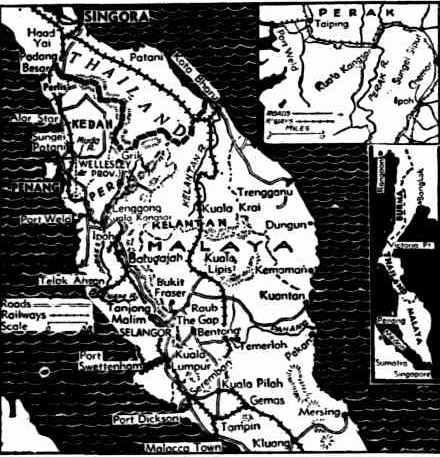
The West Australian, 17 January 1942.
MALAYAN STORIES, EYE-WITNESS ACCOUNTS. Experience of Bombing.
“As I was saying good-bye to myhusband at the railway station of Kuala Lumpur the Japanese planes came over,” said Mrs. S. Prout,formerly of Kalamunda, Western Australia, and later of Kuala Lumpur, Malaya. On her return to Australia she had stories to tell of the battle for Malaya.
Describing the raid by the Japanese planes, she said: “When the alert was sounded I rushed for the underground railway; I was there about 2½ hours, and it was clear that the railway station above was one of the main objectives of the Japanese. When I came up after the raid, the luggage van of the train in which I was to travel was ablaze and the rest of the coaches were shattered and smashed by pieces of shrapnel. I owe my life to the two minutes which enabled me to leave the station and go underground. Other objectives were the post office, where next day business was carried on as usual, and he aerodrome, which did not suffer much damage. Cars on the streets were riddled with machine-gun bullets, suggesting that the Japanese dropped their bombs and then machine-gunned the streets of the town. However, my train was good enough to travel in. On the journey all was quiet until we reached Tampin, about two hours’ run from Singapore. There the Japanese came over again and dropped 24 sticks of bombs, killing 14 Asiatics. Australian soldiers were convalescing at Tampin, and they had to leave.” Mrs. Prout said that she saw no plane brought down in the raid, but at Kuala Lumpur she saw some of the enemy brought down by anti-aircraft fire. At Kuala Lumpur she was told that in the north37 miles of beaches were littered with Japanese dead, and that there was wonderful fighting by the Indian troops, who had accounted for many of the Japanese, who were said to be wearing shorts, singlets and sandshoes. People Machine-gunned. “We arrived at Singapore at 3o’clock in the morning, and the next night had three more raids,” said Mrs. Prout. “In one of them an oil dump was hit and a tetrific fire resulted. American bombers, which had been owned by Thailand, have been used in raids. The Japanese have even dropped the landing gearof these planes as they flew over the aerodrome, giving the impression that they intended to land. Then they would machine-gun the cheering people.” Mrs. Prout, whose husband is an engineer at Kuala Lumpur, has lost her valuable home and arrived in Australia with only four cases containing clothes and belongings. She has a small child with her. Two more of her children reside in Western Australia. A married woman (formerly Miss M. P. Heagerty), who until recently resided at Penang, said of the raids there that one night Penang looked like the fire scene in the film “Gone With the Wind.” Miss Heagerty said that she had spent some of the time during a raid under a table eating bananas with children, the oldest of whom was four years and the youngest, her own, four months. The children had behaved marvellously, accepting the very heavydull thuds of the bombs as bad tunder bursts. She had been evacuated with her child, first by ferry to Butterworth, then by train to Kuala Lumaur, and by another train to Singapore. “After the first raid we were told to get out,” said a resident of Ipoh whose home town is Perth. “The Japanese came over at low levels, so low that you could see the bombs leaving the planes, and about ten or 15 buildings were hit. They then machine-gunned the streets. However, I saw no casualty, and I believe there were only a few. I escaped by motoring the 400 miles with my four-months-old baby.” A Singapore resident, describing the first raid there, said that the Japanese came over dropping bombs. and then machine-gunned the streets. Most of the damage was done in the centre of the city. There appeared to be little organisation. The street lights were left on during the raid.
For many years and despite extensive searching I could not find shipping records for Neva and Roy. Eventually as something of a fluke I finally found her and Roy leaving Singapore in the December of 1941. Neva was incorrectly recorded as Nina on the shipping records. Roy was incorrectly recorded as Ray. The both came back on the Ulysses and arrived in Fremantle in West Australia on December 31st, 1941. In the April of 1942 off North Carolina near the U.S the Ulysses was torpedoed by a German submarine. She would sink below never to sail again, but not before Captain Russell successfully evacuated all crew and passengers including women and children.
- With appreciation to the MALAYAN VOLUNTEERS GROUP UK for their information herewith.
The Ulysses was a Blue Funnel Line ship built in Belfast, Ireland in 1914 she had been used as a troop ship in the first world war. At the time that Neva boarded her she had been desperately in need of a refit however the war in Europe made it far too dangerous, instead she was shipped to what was considered the much safer Hong Kong for these works. At the time that Neva and Roy were taken aboard she was in the hands of Captain J. A. Russell. It is remarkable that the Ulysses ever made it to Singapore at all as she was already in trouble following a typhoon and being grounded on Little Green Island just off Hong Kong. Following the attack by the Japanese on Pearl Harbour on December the 7th, 1941 the Ulysses was redirected to Manilla in the Phillipines, low on fuel, Captain Russell was advised that Manilla was under heavy attack and instead she went to Singapore on only one working engine. When she made it to Singapore it was with surprise as the British stationed there were of the understanding that she had been lost. She was urgently pressed into service to evacuate as many women and children as she could and on December 12 she slipped out of Singapore heading for Fremantle in West Australia, limping rather than steaming. What I have learned from my research is that towards the end of the evacuation of Singapore, people were getting on any boat they could. In some cases this was even Chinese Junks. As the bombs fell around Singapore and the Japanese were breaching the outskirts of the city the panic in the city had turned to pandemonium and not a lot of records were being taken.
Many of the ships were bombed and sunk in the water before they could even get out of the harbour. Many more were bombed by the long range flying Japanese Zeroes at sea and sunk. The loss of life was substantial. In situations such as the SS Viner Brooke she was not only sunk but those aboard were shot in the water or as they clambered onto the beaches. Many of these killed were Australian Army Nurses who had been stationed in Singapore. Between the 8th of December the Japanese army was pouring into Singapore and by the 15th they had the city. Neva and Roy had quite literally slipped out under fire.
Neva’s husband had signed up to repel the Japanese but was captured and marched to the infamous Changi and the Burma Railway in nearby Thailand.
MILES B.D. [Brian Daniel] b.23.9.1915 NSW Australia. Engineer, Jelapang Tin, Perak. Married Neva Alma Helmrich 3.37 Ipoh. He enlisted VF 1940. Pte 13952 1FMSVF POW Singapore [Changi & Havelock Rd] to Thailand with D Battalion 12.10.42 [Wampo, Tarsao, Chungkai, Linson]. Living in Beverly Hills NSW post war.
How he survived is anyone’s guess. But he did and later returned after the war to Australia. Neva had been told that he was almost certainly dead.
By 1943, Neva appears on the electoral rolls as living in Petersham. It is here that she would have been living with her mother and stepfather.In 1945, Brian was repatriated back to Australia and he and Neva subsequently divorced. Given their experiences and my complete lack of understanding of what they had endured, I wouldn’t like to comment on the reasons and am sure that both were greatly changed by their experience of the war. On the 8th November 1946, Neva married Ernest Kingshott Whitehead at the Waverley Registry Office. Ernest known as Mick (for reasons I could not explain) had been married previously and already had an established family when he married Neva.
The following year Brian also remarried. A lady called Ruth Hollie. I hope they had a happy life together. I hope that Brian was able to get some peace following the horrors of war and the camps. A few days later on the 13th November 1946, my Dad was born at Paddington in the Women’s Hospital. Some years later another brother was born. In 1949 the family were living at Bronte in NSW where Ernest or Mick as he was always known had his own taxi and was a Cab Driver. When the children were growing up Neva worked at many of the local leagues clubs as a Barmaid. I know she invented her own cocktail, The Vespa, inspired by a James Bond movie at the time. The recipe is here on the site.
I don’t know if Neva was ever truly happy with the way life turned out. I wonder how things might have been different if it were not for the war. I suspect she probably just got on with it like most people and hoped for the best. In 1952 Neva’s mother, Priscilla had a modest win in the lottery and took her and my father to England for a holiday to visit Neva’s sister Audrey. At this point I would like to heartily thank my English (Welch) cousins who have made contact and provided me with a treasure trove of photos and information on my grandmother and her family. You have my eternal thanks! Recently this photo (below) of Neva and Priscilla leaving on the boat for England came to light. That little boy hanging on the railing next to them is my father aged about five.
By 1954 the extended family of Whiteheads were living in Bondi, New South Wales. In 1958 the family moved to Bronte. by 1966 the family had long lived in the Saratoga area around Gosford and Woy Woy. Mick and Neva had had a caravan park and a petrol station there. As Mick’s children from his first marriage were older, many of them had moved on and had their own families by this time. This was also the same year that my mum and dad got married. Neva came to their wedding in Hastings but Mick was too busy with a land-deal he was speculating in. (Think that put him in the bad-books with Mum!) What I do know for sure is that Neva and her mother Priscilla remained very close their entire lives. I daresay her mother understood well how complicated relationships could be.

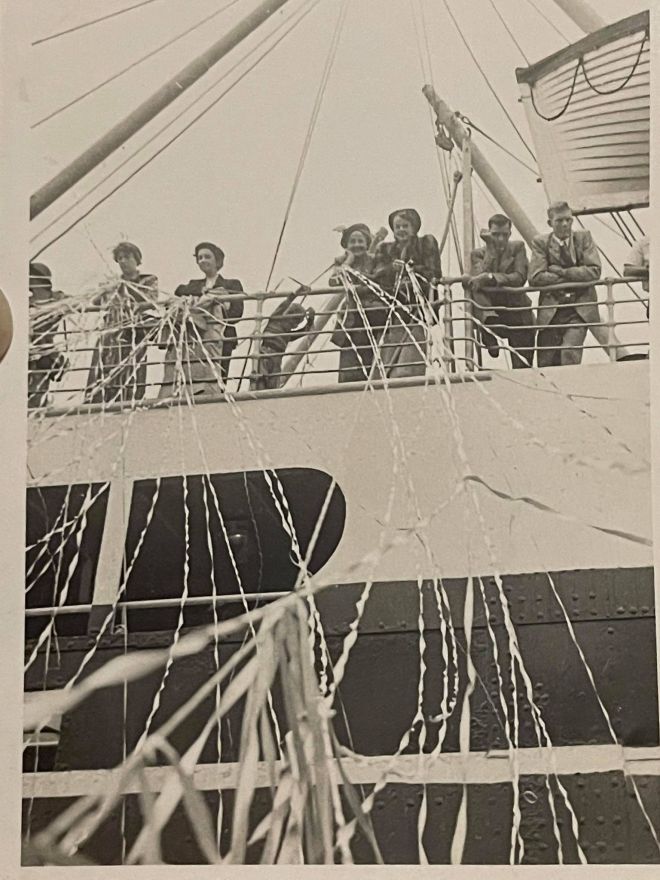
I do remember as a child living in Sydney having a few visits with my grand-parents but they are a young child’s memories and I was probably more fascinated by the things that little children are. I remember the house they lived in at Saratoga was on the Brisbane Waters. It probably wasn’t much of a place in comparison to today’s standards. In point of fact I remember thinking it was little more than a shack with a frightening thunder-box in the front yard as a lone sentinel. Nonetheless I do have good memories of being there whenever we visited NSW.
Below is a letter from Neva’s cousin Shirley, to give some context to Neva’s take on life and her great sense of humour. It also is telling of the the closeness of her relationship with her mother (Priscilla) who had died a few years earlier.
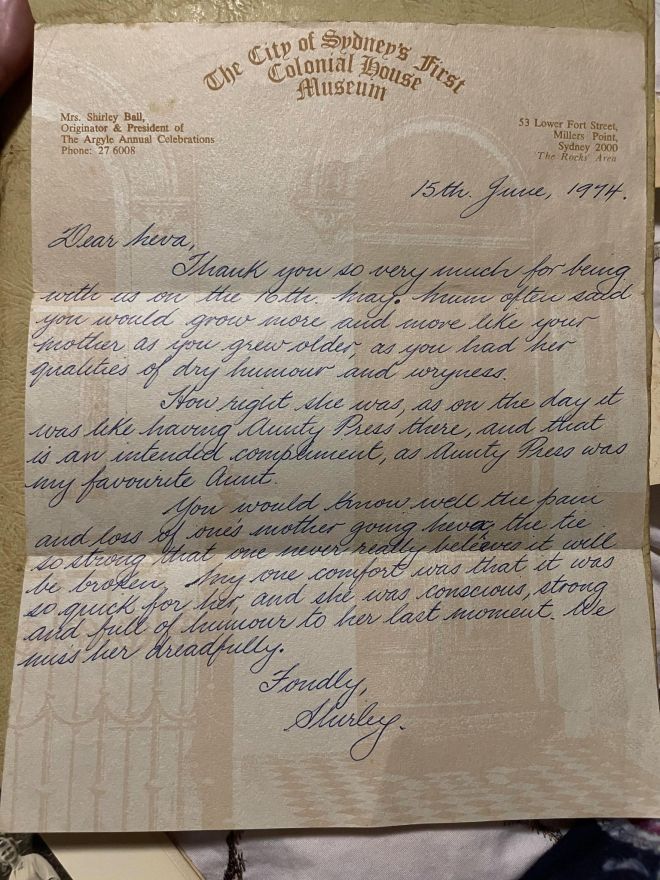
In 1983 we were told that Neva had a brain cancer and we were taken to visit her at the hospital in Woy Woy. She was a tiny and frail woman whom I remember being wrapped up in a thick cardigan and a woolen hat on her head. She was in a wheelchair and obviously very unwell. We went outside so she could get some sunshine. I wish I’d known then to ask her more questions and got to know her better for the woman she was but it just doesn’t occur to kids. Nonetheless when she died I remember being quite sad about the death of the grandmother I didn’t know enough.
On the 7th December 1983 Neva died aged 65. Neva was cremated at Palmdale Crematorium on the 9th December. My father attended her funeral along with the rest of his family. She was interred along with her mothers ashes. Mick died in 1987 and he is also with her. In the end she and Mick had stuck together, made a life together and lived through some interesting times.
Palmdale New South Wales Australia. Palmdale Crematorium New South Wales 5 Sep 1987 Cemetery: Palmdale Section: Palmdale, Area: Brickwall, Sec: H Side B, Site: C22 Cemetery Location: Palmdale, New South Wales.

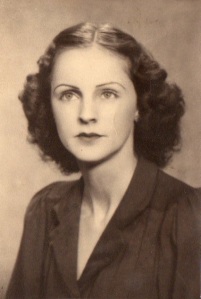
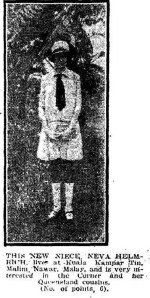
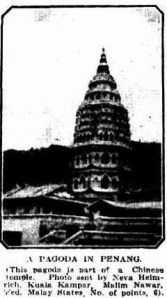
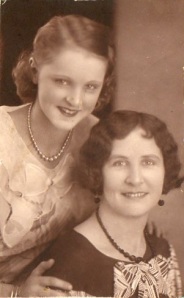
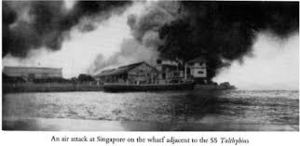

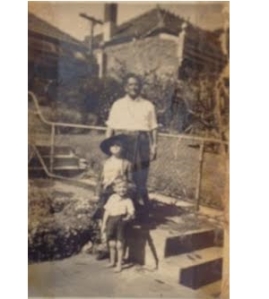
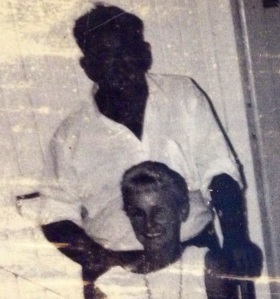

What an interesting life your Grandma Helmrich lived! …and how wonderful that she wrote and sent pictures to her local newspaper when she left for Singapore. You have researched and written a very interesting account of her life. I never met my Grandma Helmrich. She was Mary Helmrich who was married to my grandfather, William Shand Helmrich in 1924. Sadly she only lived to be 42 years old – she died when my Dad was only 9 years old, so the stories are told through the eyes of a child.
Fiona Moore (nee Helmrich)
Kings Langley, NSW
Thanks for your comments Fiona. I’m just getting this page up and going and am very excited about where it can go!
Well I am so excited to read the above as I am the daughter of Audrey Florence Helmrich who married Tom Cecil Welch at the age of 18 in Singapore. I always wanted more information though my mothers cousin, Shirley Ball researched ancestry and also wrote a book “Muma’s Boarding House” I have a record of my Mothers upbringing inQueensland that she recorded for me on a reel to reel recorder, this I transferred to the written word
Oh Vicki! thank you so much for your comments. I have questions I dearly wish to ask you. I wonder did you meet my dad in 1952 when he came to visit with your parents family, he came over with his mother and grandmother. I’ve recently come back from New South Wales where I have found out a great deal about Priscilla’s family the London’s. I wonder do you have any photographs of Priscilla?
Hello d? Yes I met Robert ! I have lots of stuff,would love to exchange info and many photos but prefer to do it with private e mail exchange. This is going to be fun !
Hi Vicki
We seem to have lost touch after my computer(s) went into permanent retirement [my fault, again.] I/We trust you are all well. I will try your email again, but this is to make sure. You might try my current email 01726NAR@gmail.com. I also will be set up for Skype soon and will let you know.
Kindest Regards. Robert
Hi Robert,I was so surprised to see the Mail regarding the Family after I was doing some research.. Has been many years since we have seen or spoken to each other,sadly lost contact over the years.Would be nice to hear from you again.
Regards,
Cousin
Edward,, ( TED).